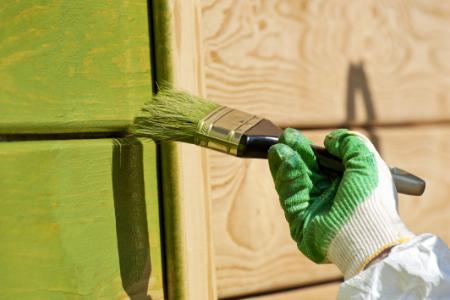Tips to Take Care of Your Paintbrushes for Years of Use

Quality paintbrushes. They come in different styles from wall brushes to trim brushes to sash-trim brushes. The bristles on quality paintbrushes are usually natural animal hair, synthetic, or a hybrid of the two. Natural is usually best for oil-based paints while synthetic is best with latex-based paints. Quality brushes make the paint job superior to what it would have been if completed with cheaper paintbrushes. They give your project a finish look that’s more professional in appearance, and you’re able to do the job with ease as opposed to cheaper brushes that fall apart or clump up. Quality paintbrushes, however, aren’t cheap, and though they won’t break your bank account, you still want to take care of them for your next paint job. Care includes two basic steps: (1) cleaning; and (2) storing, but the processes are different for short- or long-term care.
Cleaning & Storing Paintbrushes in the Short-term
If your storing your paintbrush overnight to begin work the following morning, then scrape off excess paint in the paint can first or wipe the brush on old newspaper. Next, fill a bucket with warm water and move the brush around to move most of the remaining paint. For overnight storage to keep your paintbrushes fresh, you can do one of two things, depending on the materials you have available:
1. Use plastic wrap. Wrap the cleaned bristles and ferrule (the metal part that holds the bristles tightly together) in plastic wrap. Make sure the seal is airtight. Don’t use aluminum foil because the seal isn’t as tight.
2. Use a Ziploc bag. Cut one corner diagonally. Place the brush handle into the Ziploc bag and through the tear in the bag so that the bristles and ferrule remain inside the bag. Zip the bag.
Cleaning Paintbrushes for Long-term Storage
There are several steps to take to clean paintbrushes thoroughly before storing for any length of time.
1. Scrape off large amounts of paint into the paint can and then rinse off the remaining excess paint using water.
2. Grab some newspaper or any other unwanted paper and brush the paintbrush in an “X” motion back and forth until the brush appears dry.
3. Use solvent to remove any remaining paint. Water should be used latex paint and paint thinner for oil-based paint.
4. Wash the paintbrush with soap and water to remove any stubborn remaining paint or solvent and rinse.
5. Use an old dish brush to brush away any hard to clean paint buildup.
6. To realign the bristles, slap the brush against your hand or other object a few times and then smooth the bristles so they seem almost new. A paintbrush comb available at any home center or paint store can be used to realign the bristles, too.
7. Wrap the paintbrush tightly in paper or a towel, secured by tape or rubber band, and store.
General Tips
- When using paintbrushes for the first time, break them in by slapping the bristles against you hand to loosen them.
- To prepare a natural-bristle brush for its first use, condition the bristles by soaking them in linseed oil the night before the first use.
- Clean paintbrushes immediately after each use.
- Do not use brushes both for latex- and oil-based paints. Keep one or a set of brushes for oil paints and another one or set of brushes for latex paints.
If you commit to cleaning and storing your quality paint brushes accordingly, then you can expect to have your paint brushes in good working condition for years.